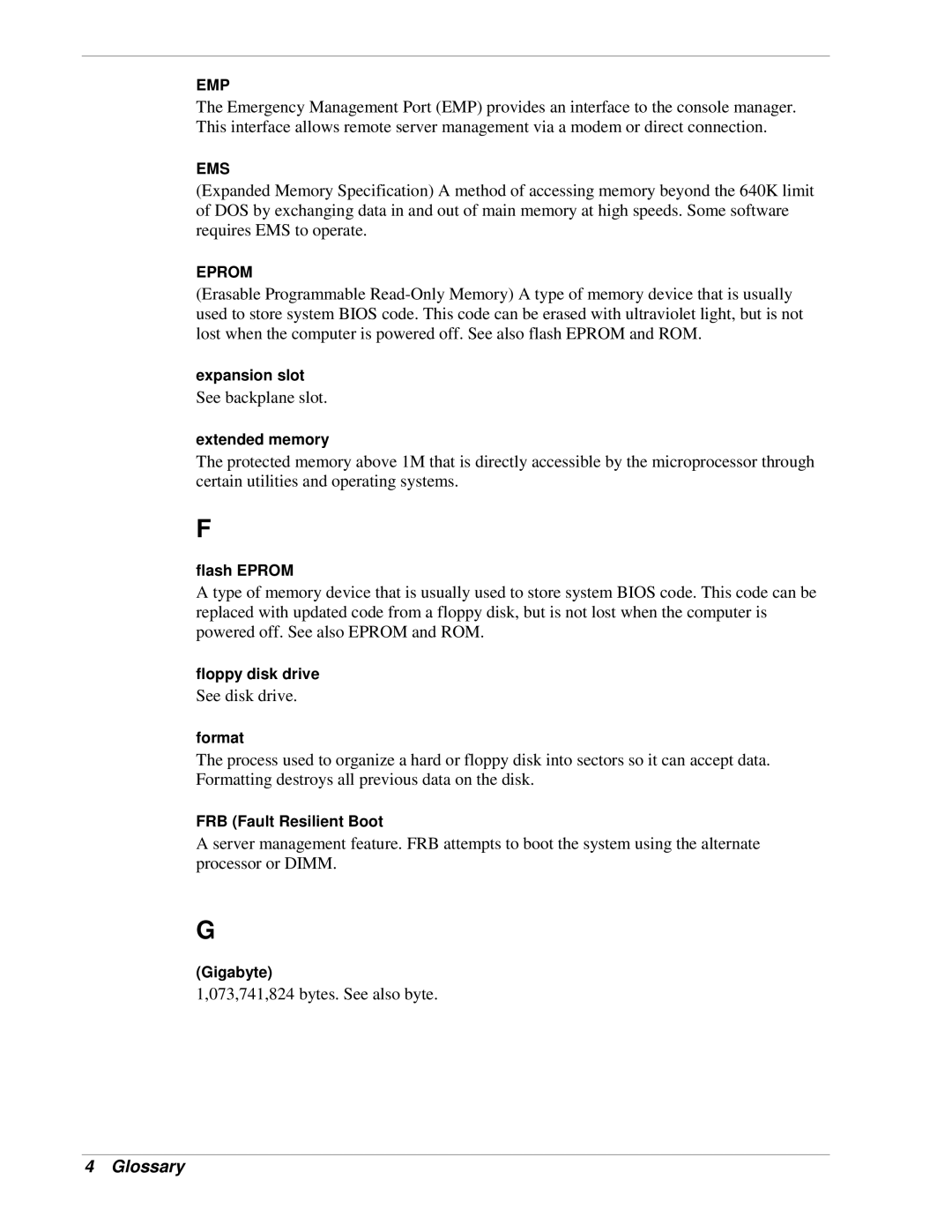
EMP
The Emergency Management Port (EMP) provides an interface to the console manager. This interface allows remote server management via a modem or direct connection.
EMS
(Expanded Memory Specification) A method of accessing memory beyond the 640K limit of DOS by exchanging data in and out of main memory at high speeds. Some software requires EMS to operate.
EPROM
(Erasable Programmable
expansion slot
See backplane slot.
extended memory
The protected memory above 1M that is directly accessible by the microprocessor through certain utilities and operating systems.
F
flash EPROM
A type of memory device that is usually used to store system BIOS code. This code can be replaced with updated code from a floppy disk, but is not lost when the computer is powered off. See also EPROM and ROM.
floppy disk drive
See disk drive.
format
The process used to organize a hard or floppy disk into sectors so it can accept data. Formatting destroys all previous data on the disk.
FRB (Fault Resilient Boot
A server management feature. FRB attempts to boot the system using the alternate processor or DIMM.
G
(Gigabyte)
1,073,741,824 bytes. See also byte.
